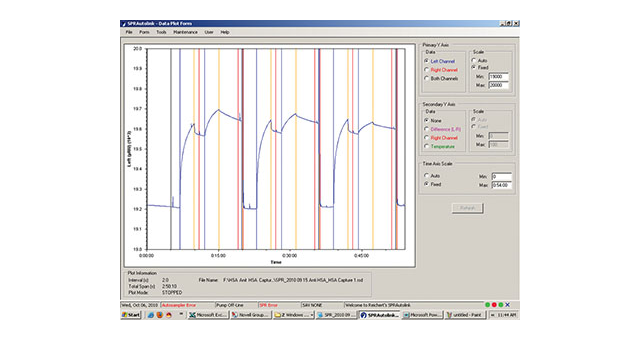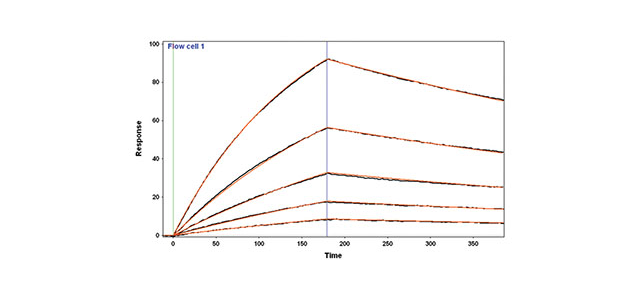Antibody based capture analysis using a 2SPR Surface Plasmon Resonance (SPR) system
Non-covalent capture methods are typically used to attach ligands to an SPR surface in instances where the ligand cannot withstand the lower pH needed for covalent coupling or when a ligand needs to be attached in a more oriented manner. This approach is applicable to a variety of types of samples. The example in this Application Note is where Goat Anti-Mouse IgG is amine coupled to a dextran surface and then used to capture monoclonal Anti-HSA IgG. Antigen binding (HSA) to the Anti-HSA is followed over a series of concentrations and a KD value is determined.
Experimental
The experimental conditions are summarized in the following table:
- Ligand: Anti-HSA
- Analyte: HSA
- Analyte Concentrations: 1.25, 2.5, 5, 10 and 20nM
- Association Time: 3 min
- Dissociation Time: 4 min
- Regeneration: 10 mM Glycine pH 2.0 with 10% Glycerol
Results

Figure 1: About 2,000 mRIU of Goat Anti-Mouse IgG Fc was amine coupled to the XanTec CMD500m dextran sensor chip. For each series of injections, a constant concentration of monoclonal Anti-HSA IgG (50 mg/mL) was captured over the surface, and then varying concentrations of HSA were injected (see table). Both Anti-HSA and HSA were then removed during each regeneration cycle.

Figure 2: The good reproducibility of the capture step and the chemical stability of the XanTec CMD500m dextran sensor chip are seen here. Even after multiple injection regeneration cycles, the surface was stable and gave reproducible results.

Figure 3: The good reproducibility of replicate injections of HSA can be seen in this figure. HSA was injected at various concentrations (see table) and fit to a 1:1 binding model. The red lines are the fit obtained in Scrubber (Biologic Software). The equilibrium dissociation constant (KD) obtained was 4.93 nM.